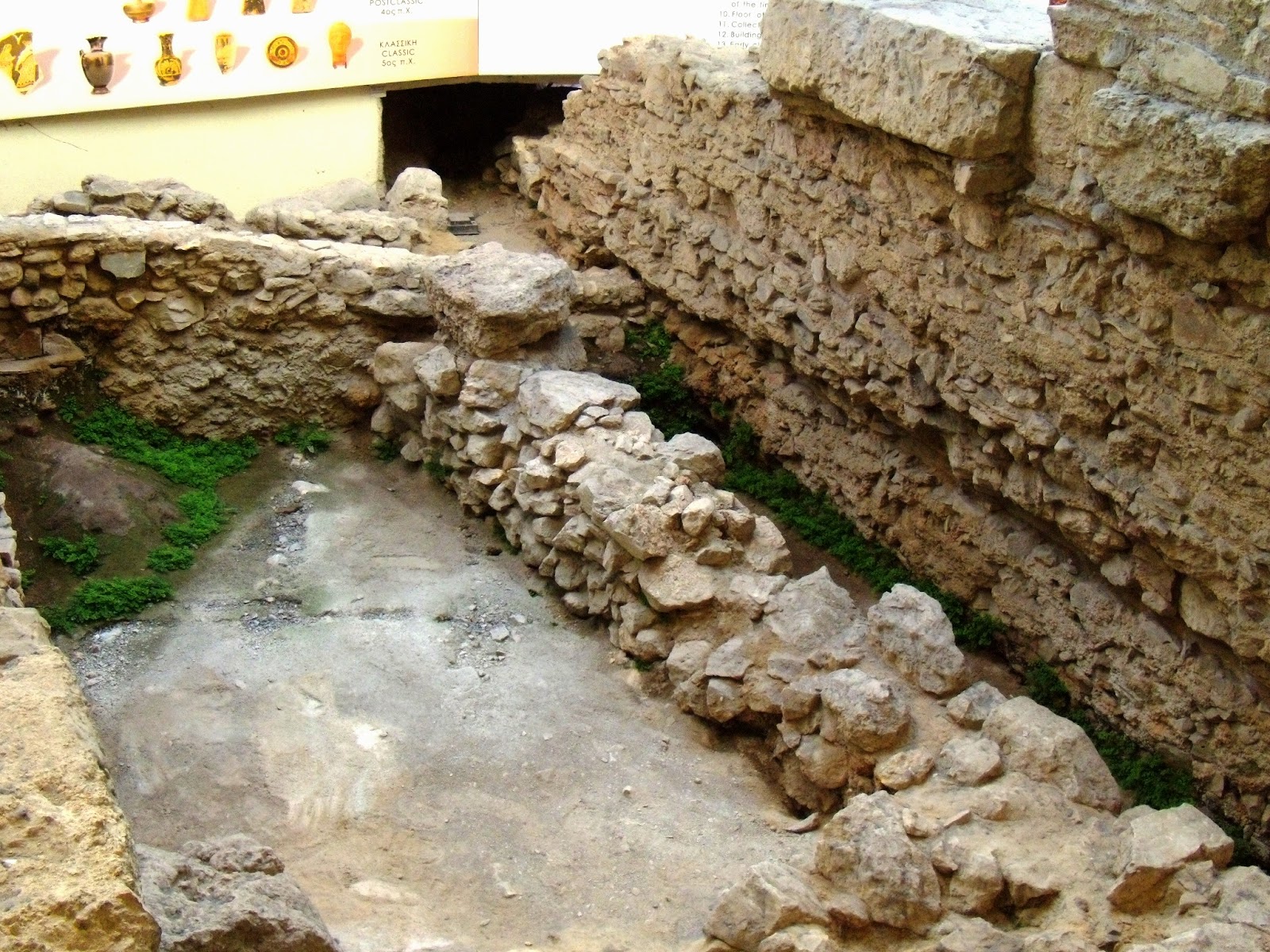The story is not
new. Metro lines have been constructed in many capital cities for the past decennia. Excavating the layers covering ancient settlements inevitably led to
new discoveries.
This was the
case in Istanbul, Athens and Thessaloniki, Rome and Naples, Sofia (ancient Serdica), Plovdiv (ancient Philippopolis), and many
others. In all cases, the finds yielded remains of temples,
agoras, private houses and workshops, mosaics, coins, pottery, jewelry, etc. However,
each city contributed in its own way to enrich our archaeological inheritance.
In Istanbul, the construction of the Marmara Undersea
Metro Line revealed a large section of ancient ports along the Bosporus, including ships of varied sizes from the
5th to the 11th century. The largest concentration of 37
shipwrecks dates from the 6th and 7th centuries AD.
[Vaulted Eridanos River at metro station, Athens]
Thessaloniki surprised
us with its ancient main street, the Decumanus Maximus, and the Via Egnatia, besides several necropolises (see: Archaeological finds at the Metro of Thessaloniki
and Thessaloniki continues writing history).
In Naples,
archaeologists were able to retrace the ancient coastline thanks to a variety of
shipwrecks. They excavated an important thermal bath complex, remains of the
commercial area around the Greek agora, several houses with their atrium, and
the Decumanus Maximus (see: The
harbor of Roman Naples uncovered).
Sofia, the capital of Bulgaria, is no exception: Evidence
of antiquity can be clearly seen at the Serdica Station, which exhibits a
wealth of unearthed Thracian and Roman ruins and modern architecture.” (quoted from Wikipedia). Plovdiv,
ancient Philippopolis, is
another of those capital cities turned upside down by recent archaeological
excavations (see: Plans enough to dig out Philippopolis).
Rome lately made headlines
during metro works. Ancient Roman barracks from the 2nd century AD
were discovered some nine meters below today’s street level. The ruins count 39
rooms, and many still display mosaics and frescoes. Following suit with
similar situations in Greece
and Turkey,
authorities plan to incorporate the barracks into a large metro/museum
structure. The station is located between the Coliseum and the Forum Romanum,
along Line C, which is still under construction.
Nowadays, all major cities need more and more to revert to traveling by
metro. As the majority of those towns have been built over and on top of ancient
settlements, it is inevitable to hit remains from eons past. The municipalities
share the most important artifacts with their local museums, but it is an
excellent idea to create mini museums or exhibition showcases at the places
where the pieces were found!
Paris may have been the first to display copies of telling artifacts from the
Louvre. It is a true pleasure to spend time at the telling metro stops in the
cities mentioned above and more.


No comments:
Post a Comment